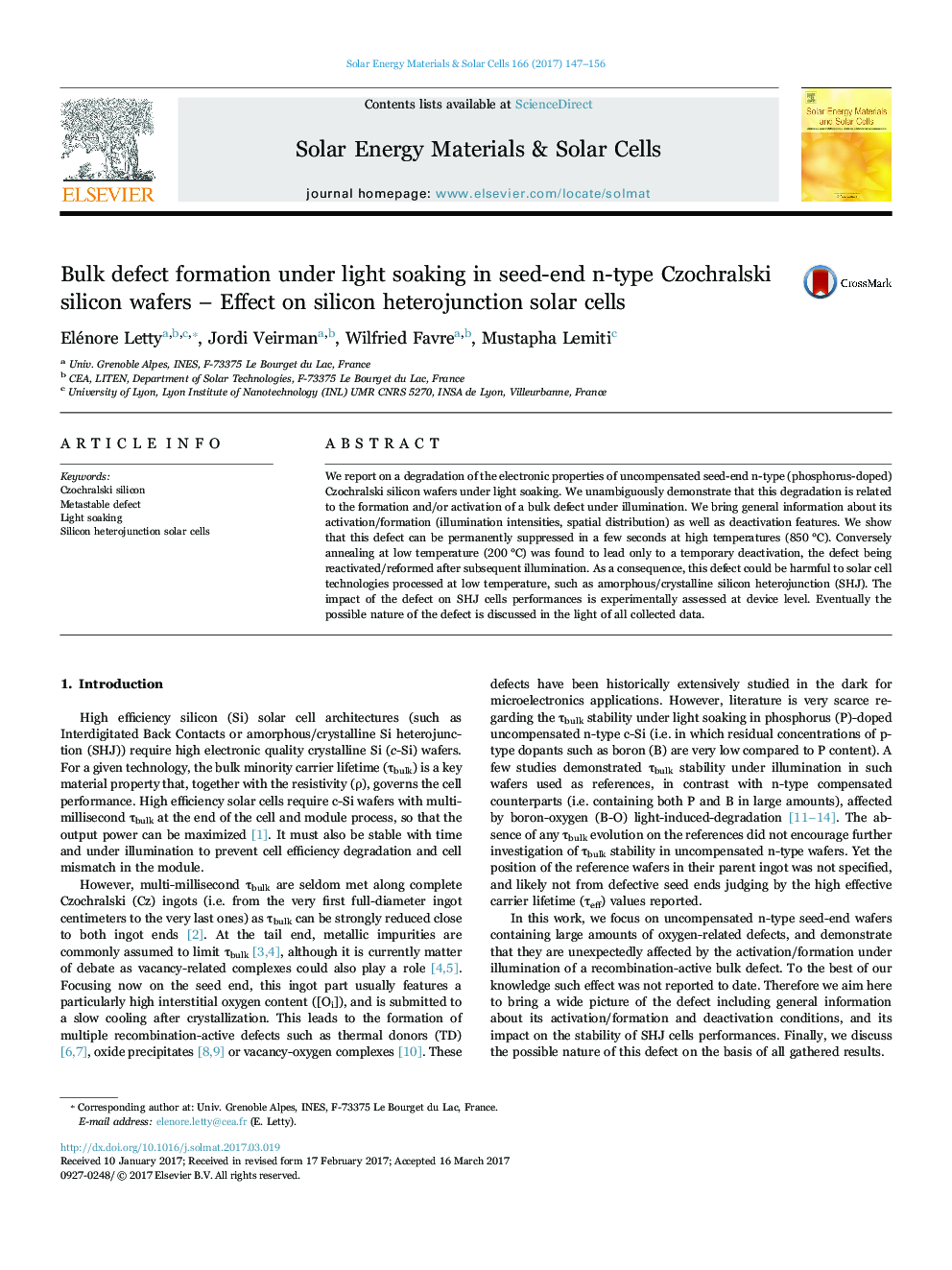| Article ID | Journal | Published Year | Pages | File Type |
|---|---|---|---|---|
| 4758844 | Solar Energy Materials and Solar Cells | 2017 | 10 Pages |
Abstract
We report on a degradation of the electronic properties of uncompensated seed-end n-type (phosphorus-doped) Czochralski silicon wafers under light soaking. We unambiguously demonstrate that this degradation is related to the formation and/or activation of a bulk defect under illumination. We bring general information about its activation/formation (illumination intensities, spatial distribution) as well as deactivation features. We show that this defect can be permanently suppressed in a few seconds at high temperatures (850 °C). Conversely annealing at low temperature (200 °C) was found to lead only to a temporary deactivation, the defect being reactivated/reformed after subsequent illumination. As a consequence, this defect could be harmful to solar cell technologies processed at low temperature, such as amorphous/crystalline silicon heterojunction (SHJ). The impact of the defect on SHJ cells performances is experimentally assessed at device level. Eventually the possible nature of the defect is discussed in the light of all collected data.
Related Topics
Physical Sciences and Engineering
Chemical Engineering
Catalysis
Authors
Elénore Letty, Jordi Veirman, Wilfried Favre, Mustapha Lemiti,
